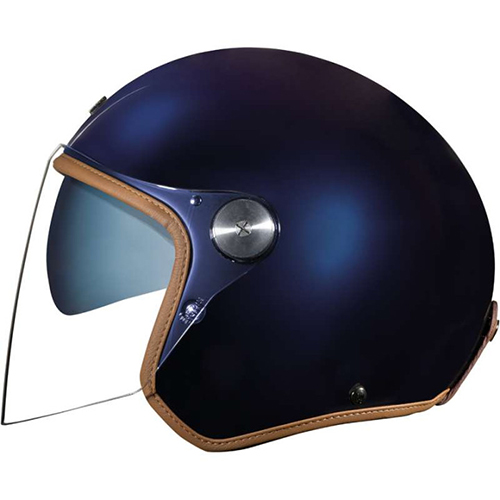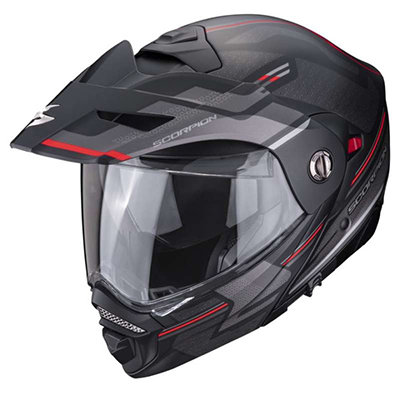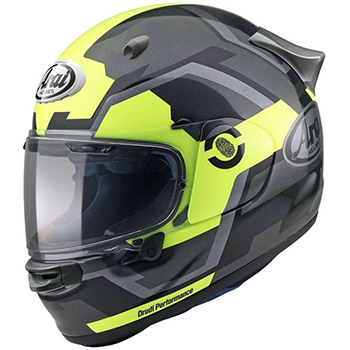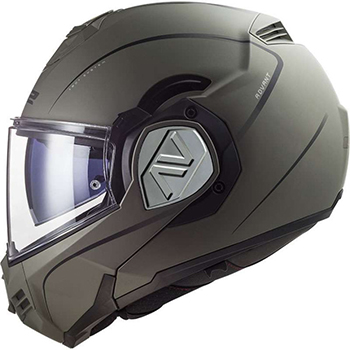
#ECE22.06 #casquemoto #équipementmotard #normecasque #ECE22.05
Wouldn't wearing a Templar helmet on a motorcycle be a classy thing to do? And yet, it's forbidden. Yes, certifications govern the level of protection provided by a motorcycle helmet, to protect our skulls and our few valiant neurons. This is precisely the aim of the new ECE 22.06 standard, which replaces 22.05. What additional safety does it provide? Can we still wear a 22.05-approved helmet? We explain everything.
What is the new ECE 22.06 certification standard? What are the changes compared to ECE 22.05?
Let's take a look at the background to motorcycle helmet approvals.
In France, wearing a helmet on a motorcycle is compulsory. To prevent construction or bicycle helmets from appearing on motorcyclists' heads, the headgear in question must be approved. What criteria must it meet to qualify? Until recently, the ECE 22.05 standard listed the details. But in 20 years of existence, helmets have had time to evolve: micrometric buckles, new materials, sun shields, not to mention a host of accessories. As a result, on July 1, 2022, the obsolete ECE 22.05 was replaced by ECE 22.06.
What is the aim of these new test procedures?
To increase the protection offered by more stringent testing of helmets and helmet accessories. With standard 22.06, they are further abused, tortured and subjected to strange anvil-based torments to ensure shock absorption, test external distortion, as well as checking chin strap, vision angle, visibility, chin strap and jaw strength.
The persecutions are numerous, but the most demanding are undoubtedly the endurance tests. To put it simply, the helmet is thrown onto an anvil, then the condition of the dummy's head inside is examined.
![]()
What are the major changes in these tests linked to the new ECE 22.06 standard?
Here's a look at the absorption tests:
- Modular helmets must now be tested in jet AND full-face mode. This is a minor revolution compared with 22.05, which required testing only with the chin strap closed and locked.
- The number of impact points on the helmet has been increased from 6 to 18 for anvil drop tests.
- Test speeds change. So, in addition to the standard speed projection already present in the 22.05, we've added a low-speed jet, a high-speed jet and finally a landing on an oblique, non-flat surface. The aim is to simulate a rotating impact.
Are there any other evolutions? Yes, and there are many. Here are three that we feel are worth highlighting:
- The screens, too, are now tested to ensure that they don't warp, break or detach. To do this, a steel ball is thrown at them at 216km/h. The objective? Simulate an encounter with gravel or a bee on steroids at high speed.
- Tinted screens can be darker.
- Abrasion resistance is now tested. And yes, in the event of a slip, it seems crucial that your headgear doesn't melt like Emmenthal in the sun.
Can I still ride with my ECE 22.05-approved motorcycle helmet?
It's no doubt this existential question that led you to this article. No need to drag out the suspense: the answer is yes. Rest assured, you can still ride with your ECE 22.05-approved helmet even now that the new standard is in place. So there's no need to run out and buy a new helmet. That is, unless you want to, and we're not going to stop you.
![]()
Here are a few examples of ECE 22.06 models:
- Jet: NEXX XG20 ClubHouse

- Adventure: Scorpion ADX 2

- Integral: Arai Quantic (first ECE 22.06-certified helmet)

- Modular: LS2 FF906 ADVANT

![]()
---> Here's a list of all our ECE 22.06-certified models.
Resellers can sell ECE 22.05 helmets while stocks last.
![]()
So, who is affected by this new standard?
Helmet manufacturers. They are the ones who need to make the big change. New studies, new designs, innovative technologies - they've got their work cut out for them. For the record, here's their agenda.
- July 1, 2022: it will be impossible to obtain 22.05 certification for a new helmet.
- July 1, 2023: end of 22.05 routine testing. Note that a manufacturer must supply 7 helmets for every 3,200 produced.
- January 1, 2024: ban on sales of 22.05 helmets.
Will ECE 22.06 motorcycle helmets necessarily be heavier and/or more expensive?
It begs the question. It's all very well to make helmets stronger and stronger, but they don't come with titanium neck braces! Will the weight of our headgear necessarily increase? A quick look around reveals otherwise. While the Shoeï NXR are 60 g heavier, the Klims are the same. By the way, a special mention goes to the Krios model, which has gone from ECE 22.05 to 22.06 without any modification. Hats off to it!
So, what are the different options being considered to meet these stricter tests? Adding more polystyrene increases the protection offered, at the expense of weight and volume. Another possibility is to develop new materials or redesign helmets to combine lightness and strength.
![]()
What about pricing? Are ECE 22.06 helmets more expensive?
Of course, these new studies, certification costs and mold changes are likely to push up prices... However, as with the 22.05 standard, we'll continue to find entry-level models as well as top-of-the-range helmets. And, as we all know, price is not the only criterion for defining a helmet's level of safety.
Should I change my headset accessories (intercoms, camera, etc.)?
What a good question! On paper, helmets are supposed to be homologated with their equipment. But will the manufacturers put all the accessory models through these tests? And for each of their helmets? It's hard to imagine. So we'll have to wait and see.
We hope this article has given you a better understanding of the mysteries of this famous ECE 22.06 standard. If you had to remember just one thing? This new certification changes nothing for you. You can continue to ride with your valiant ECE 22.05 helmet with peace of mind. Happy riding!
Watch Michel's video to complete this article:
Our last posts
#interviewmotarde #etonvaoumaintenant #motardevoyageuse #voyagemoto
#hivernale #millevaches #équipementmotard #aventuresmichel
#aventuresmichel #hardefitour #raidenduro #tout-terrain
Aucun produit

